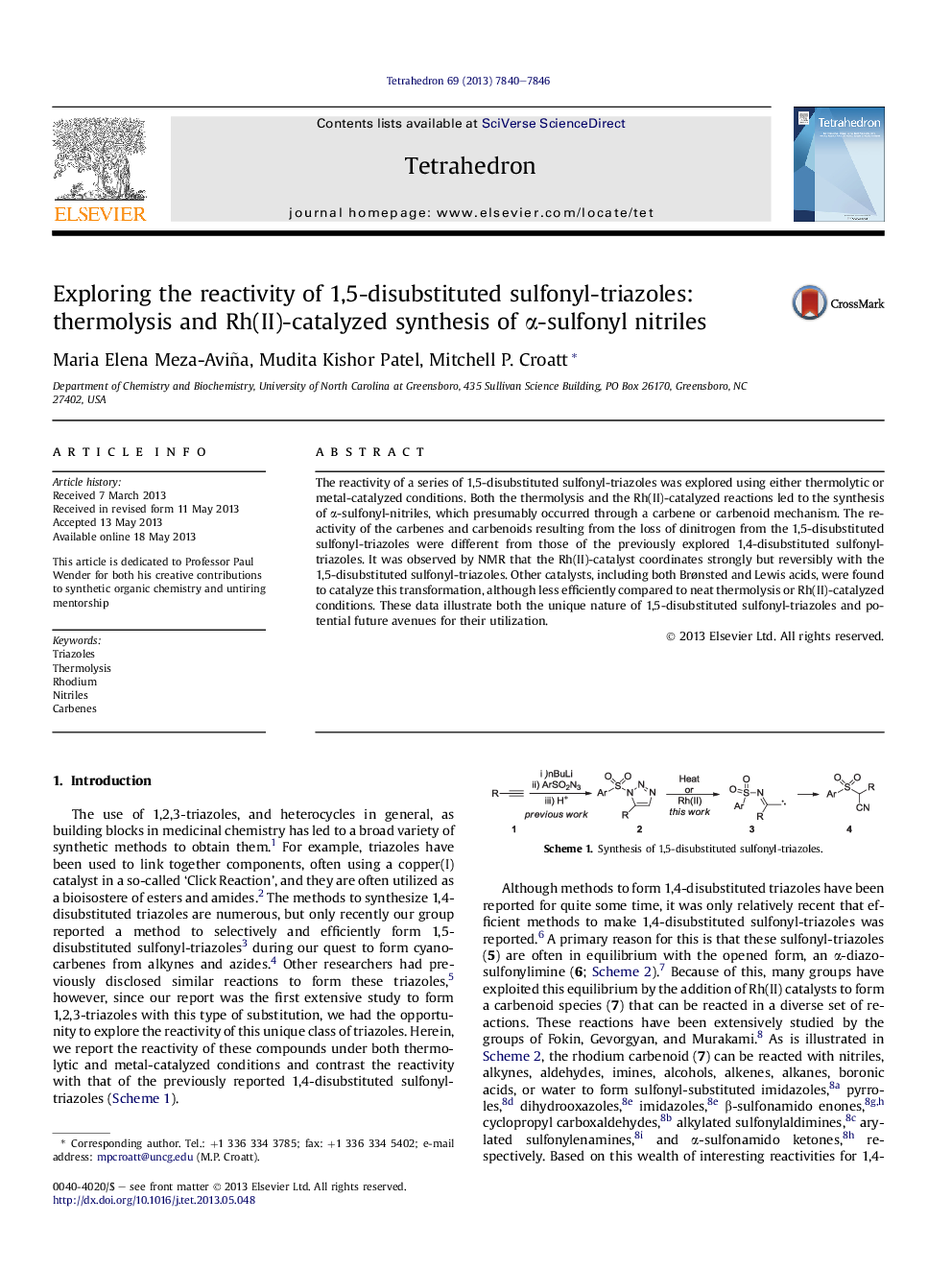| Article ID | Journal | Published Year | Pages | File Type |
|---|---|---|---|---|
| 5216935 | Tetrahedron | 2013 | 7 Pages |
The reactivity of a series of 1,5-disubstituted sulfonyl-triazoles was explored using either thermolytic or metal-catalyzed conditions. Both the thermolysis and the Rh(II)-catalyzed reactions led to the synthesis of α-sulfonyl-nitriles, which presumably occurred through a carbene or carbenoid mechanism. The reactivity of the carbenes and carbenoids resulting from the loss of dinitrogen from the 1,5-disubstituted sulfonyl-triazoles were different from those of the previously explored 1,4-disubstituted sulfonyl-triazoles. It was observed by NMR that the Rh(II)-catalyst coordinates strongly but reversibly with the 1,5-disubstituted sulfonyl-triazoles. Other catalysts, including both Brønsted and Lewis acids, were found to catalyze this transformation, although less efficiently compared to neat thermolysis or Rh(II)-catalyzed conditions. These data illustrate both the unique nature of 1,5-disubstituted sulfonyl-triazoles and potential future avenues for their utilization.
Graphical abstractDownload full-size image
